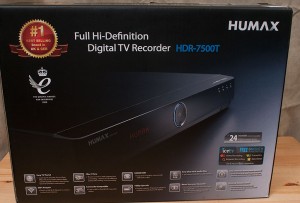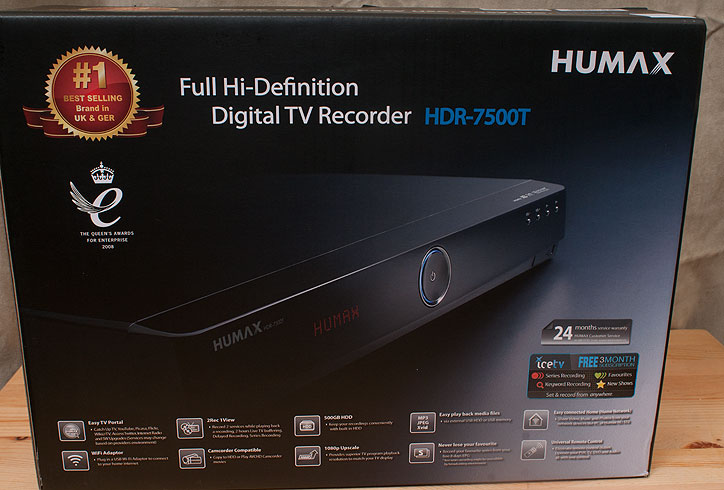Although it’s a new name on the Australian market, the Humax PVR HDR-7500T is a personal Video Recorder (PVR) that comes to Australia with a very high reputation. How good is this PVR? Does it deserve its reputation? From my perspective, yes, it’s good, and its reputation is well deserved.
First of all, there’s the little things: the attention to detail. Frequently, products like a PVR will be delivered without the essential cables that you need to connect them to your TV set. The Humax includes a set of audio cables, and importantly, it also includes a HDMI cable. This is a very important point to note, as the small items, like HDMI cables, are often viewed as high profit items by the retailers who sell this equipment. Although the cables are inexpensive to manufacture and buy, retailers often put an exorbitant mark-up on them, perhaps charging up to $100 for a cable that should cost you maybe $15.
And the battery cover for the remote is tethered to the remote’s body, so there’s no worry about putting it down somewhere and losing it, or having it fall off and then losing it.
As I said, these are but very small details, but it’s that level of detail that can make a very big difference to the whole ownership experience.

The unit that Humax provided us for review was a 500GB unit. Translated, this means that it had an internal hard drive, with 500GB of storage, which should be ample storage for most households’ viewing and recording needs. On the rear panel there’s connections for antenna in and out, HDMI, component video, Ethernet, and USB.
I found setup to be very easy and intuitive; I started by installing batteries into the remote. I then pluged in the HDMI cable (coming from the tv), connected the antenna cables, and pluged the power cable into a suitable power point. I also connected an Ethernet cable from a Powerline over Ethernet (PoE) adapter into the Ethernet port. There’s a main power switch along the rear panel: i turned that on, turned on the TV and set it to the appropriate program source (HDMI 1 in this instance) and found that the Humax was already waiting (in its wizard mode) for me to set it up.
After selecting the location, and video resolution, I proceeded to the next step, which is where it scanned the local signal spectrum, and installed the correct set of channels for my viewing. That was it; I was now watching programs.
Picture quality was excellent: Good colour, clarity, contrast and saturation. I’ve seen other PVRs which did not offer a very high level of picture quality due to various failings, but the Humax’s image quality was very nice.
I then started to look at the various menu settings, and again, (and unlike many of its competitors) the menus were simple and logical to navigate. I was starting to like this unit. A lot.
Looking at the feature set, I found this to be a quite comprehensively specified PVR. For instance, by pressing the dedicated “TV Portal” button, i immediately had access to iView, You Tube, Wiki @ TV and Picasa, as well as software updates. You should note at this time that although I’d plugged this into an Ethernet connection, I’d done absolutely nothing in terms of configuring its network access. It just worked.
Likewise, setting up to record upcoming programs is amongst the easiest, and most logical, that I’ve encountered. To record an upcoming program, load the program guide, navigate to the program that you want to record, and then just press the record button. if it’s a regular program, you’ll be prompted to choose to record either the series, or just the one show, and then save your selection. That’s about as easy as it gets.
And you can tell what state the Humax is in just by glancing at it: the power button on its face is surrounded by a LED that glows in different colours depending upon the unit’s current state. O soft red indcates that it’s in standby mode; red indicates recording, and blue indicates that it’s on, but not actively performing any role. To the left of the power button there is also a digital display that provides further information, such as the name of the currently selected station, or that the system is powering up.
Advanced features include the provision of an FTP server, and the ability to download files from the PVR to a compatible device so that recorded media may be viewed through other devices.
All in all, this is a very well thought out, designed, and implemented PVR, with a host of features that will appeal to both the general and advanced user.
